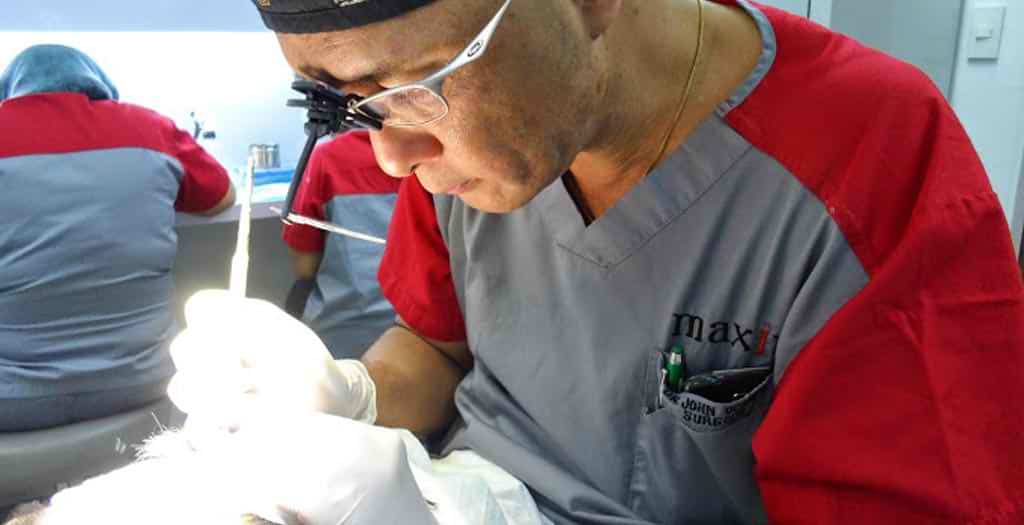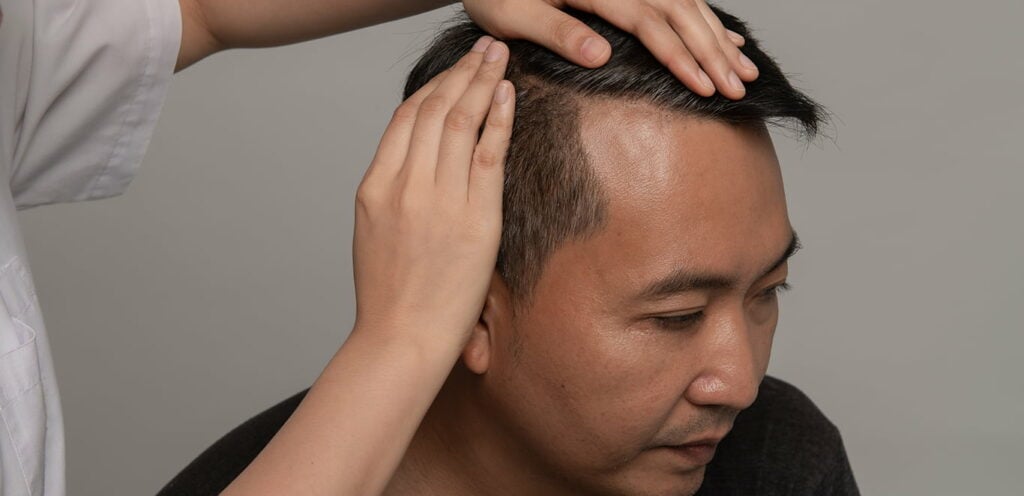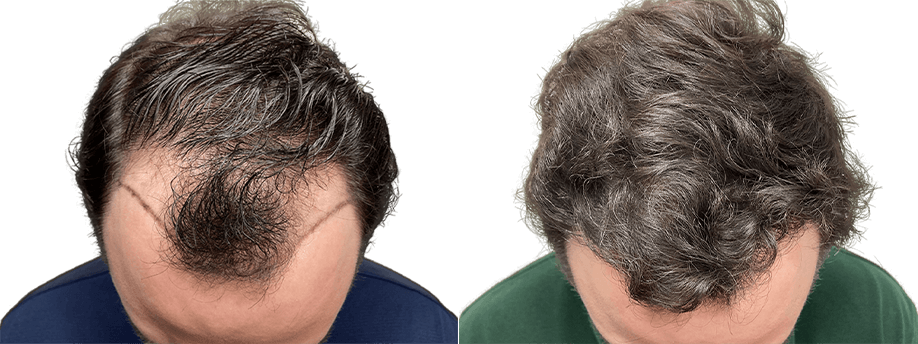What does hair restoration mean?
If you want hair restoration, it can be hard to know which one is right for your needs. Hair restoration can be confusing. There are different types and procedures. So what does hair restoration mean?
What is hair restoration?
Hair restoration is a hair loss treatment that helps people who are balding. There are many different procedures to help people with hair loss. They can be used when referring to many different procedures that include:
- Surgical options
- Non-surgical options
People often get confused about the different procedures because hair restoration covers everything. People might not know which procedures can be used to treat hair loss.
So, what does it mean?
The term can be used to describe any type of medical procedure that makes you look better. One way is to do something about your hairline and get more hair so it looks natural. This includes:
- Follicular Unit Transplant (FUT)
- Scalp Micropigmentation
- Follicular Unit Extraction (FUE)
- Biofibre Hair Implants
- Laser Hair Therapy
Also, there are many other procedures available including topical or oral solutions like:
- Rogaine
- Propecia
Additionally, it is not limited to addressing hair loss or thinning hair that occurs on the scalp. Also, facial and body hair transplants fall under the definition of hair restoration.
What does surgical hair restoration?
Surgical hair restoration includes some of the most popular and effective procedures like:
- FUT Hair Restoration
- FUE Hair Restoration

Surgical hair restoration procedures are available in:
- New York
- Greenwich
- Connecticut
- Chicago, Illinois
- Washington D.C.
- Northern Virginia
- Houston and Dallas, Texas
- Manila, Philippines
- Dubai and Abu Dhabi, U.A.E.
- Karachi, Pakistan
As a surgical procedure, both options involve the use of a local anesthetic. Also, you may need some downtime after a hair transplant. Still, this will depend on the specific procedure you have selected.
The surgeon administers local anesthesia to the patient for FUT and FUE procedures. It is important when the surgeon harvests hair follicles from the donor site. Also, it prepares the recipient site for the procedure.
What does FUT hair transplant mean?
In the FUT procedure, the doctor can transplant a large number of follicular units in one session. Yet, the recovery time of this surgical hair transplant procedure is much longer. The FUT is a little longer than the recovery needed following an FUE session.
As a surgical procedure, the FUT hair transplant leaves a horizontal scar at the donor’s area. Even if the scar remains on the scalp, the surgeon ensures that it’ll not be visible. Also, your naturally occurring hair will be enough to cover the scar.
What does FUE hair transplant mean?
Not all surgical hair transplant procedures leave a scar. In fact, FUE is a technique that does not make any linear scars. It extracts and transplants individual follicles. The procedure is more time-consuming, yet recovery is quick. Also, you can have FUE hair transplant sessions in a row.
What is Non-surgical Hair Restoration?
Due to advances in hair restoration, there are many non-surgical options. Some of these are oral or topical solutions. These include Propecia and Rogaine. You can also use them to protect your scalp from more hair loss.
Aside from these medications, patients can also choose non-invasive and non-surgical methods. Scalp micropigmentation is both a non-invasive and non-surgical hair transplant treatment.

What is Scalp Micropigmentation (SMP)?
Scalp Micropigmentation is a new procedure in the field of hair restoration. It can be used to replace hair that has been lost. This is a cost-effective option for people who do not want surgery. SMP is an effective choice for those looking to supplement a FUT or FUE procedure. Aside from being non-invasive, you can see the immediate results that SMP brings.
One thing that might work for you is scalp micropigmentation. This procedure, also known as SMP, involves implanting ink into the skin of your scalp to give the appearance of hair follicles. It takes less time to get results and it’s similar in that your hair will grow back thicker.
The Process of Non-Surgical Hair Restoration
In SMP, the technician uses sophisticated and digitally controlled needles. It helps the technician in delivering the specialized pigment at a shallow depth. So, the microdots will replicate the appearance of stubble or cropped hair.
SMP does not rely on the availability of enough donor hair. So, there is no limit on hair density. Through the use of scalp micropigmentation, the technician can create a hairline. SMP does not need any surgery to get hair follicles. You also do not need to transplant hair follicular units. There is no scarring left behind by scalp micropigmentation. You will also not have to take care of your head after the procedure is done.
Non-surgical hair restoration options may be ideal for many patients.
Consult with the hair restoration expert near you
Prospective patients should talk to a doctor who has been trained to do hair transplants. They can then learn about the different options and decide which one is best for them. A consultation is when you get to talk about what hair transplant procedure would work best for you. You will know what the doctor thinks will work best, and he can find out the root cause of your hair loss during the appointment. Doctors can tell you what kind of surgery to have. They may even suggest that you do both surgeries. This is best for getting your hair transplant goals.
What does Strip Hair Restoration mean?
A strip hair restoration is also called a follicular unit transplant. This is one of the most effective surgical options to get a natural-looking hairline. It can also help restore volume to areas with thinning or lost hair. A strip hair transplant involves using incisions to harvest and transplant follicular units as part of the surgery. As a surgical procedure, it requires the use of a local anesthetic.
The doctor will remove the horizontal hair strip from the donor area. So, they can secure the follicular units from the lower part of the back of the head. This is why the FUT hair transplant procedure is commonly known as a strip hair transplant. The doctors will choose the donor site based on the chance of getting the greatest number of grafts. Also, they ensure the horizontal scars created by FUT can be obscure by the remaining hair.
After removing, the doctor will dissect the strip into follicular units. These units will then be transplanted into the recipient site.
How do FUT works?
FUT Hair transplant is one of the best ways to fix hair loss. This is because it allows the doctor to place 3,000 grafts in one surgery session. The surgery lasts about four hours total. This means you can get 9,000 follicles transplanted onto your balding scalp area.
Furthermore, you may need to take it easy for a few days after the FUT hair transplantation procedure. Also, it takes about six months before you can see the positive results of the procedure. Thus, it may take up to a year before you see the density you wanted.
What does FUE Hair Restoration mean?
FUE, or Follicular Unit Extraction, is like the FUT procedure. It is also an effective surgical hair restoration option in treating hair loss.
When a person gets the FUE procedure, they will get a local anesthetic. This is so that the doctor can remove individual follicular units from the donor site. Hair grafts are then transplanted to the recipient site.
Since the hair grafts are individually removed from the donor area, there will be no linear scar.
FUE is a surgical procedure. Hair grafts are transplanted one at a time, so it is more time-consuming than FUT. The transplantation of hair grafts is in a limited number as well. Even though FUE is a surgical procedure, it is possible to have many sessions on consecutive days. So, the FUE procedure can let you get the hair that you want in just one day.
FUE is a type of hair transplant that will allow you to return to your normal activities faster. Many people can resume their work the day after the procedure.
FUE is a popular option among patients because it does not leave a linear scar and you do not need stitches. The results are also very good for the patient. FUE and FUT are essentially and equally effective in delivering the final result. However, they both depend on what you want or need as a patient. For example, if you want your hair to grow quickly after surgery, then the FUE method would be best for that.
It is best to discuss your hair restoration goal with your doctor So, you can achieve your wants and needs with regard to the process. It includes everything from the pre- to the post-operative hair restoration stage.
What is Robotic Hair Restoration?
Robotic hair restoration meaning refers to any procedures that use some automated system. A robotic or automated system is used in conjunction with surgical options like FUT or FUE. Often, doctors use Robotic hair restoration in a complementary way. In short, robotics can apply to the different processes of hair restoration including:
- Extraction
- Dissection
- Storage
- Transplantation of follicular unit into the recipient site
Furthermore, the tools and technologies that may be used in hair restoration include:
- Pneumatic tools
- Refrigerated storage systems
Thus, it aims to secure and preserve the greatest possible volume of viable donor tissue. It helps the doctor from the harvesting up to the transplantation to the recipient area.
The advanced technology has been beneficial for hair transplant doctors and patients. These automated systems need the presence of experienced and skilled hair transplant surgeons. So, they can oversee and operate the automated aspects of the procedure.
Many doctors believe that automation has benefits. But there are also many other surgeons who prefer to do a manual hair transplant. At this point, you can choose to use robotic or automated systems. They are both good.

